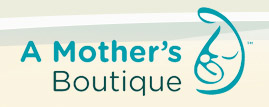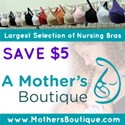Within the next year, Pittsburgh will open the Three Rivers Mothers’ Milk Bank, to be affiliated with the Human Milk Banking Association of North America. The organization anticipates serving a multi-state area and estimates it will be processing up to 250,000 ounces of breastmilk per year once operations are established. Today, we speak about the project with founder Denise O’Connor.
Are there really only a handful of milk banks around the country?
There are 16 milk banks associated with HMBANA, plus 4 developing milk banks. There is an incredible need for human milk for premature babies. A 2011 study showed that 42% of NICUs nationwide were using donor mik, but the American Association of Pediatrics made a 2012 statement that babies under 3 pounds should be fed exclusively human milk to prevent Necrotizing Entrocolitis (NEC).
One of the milk banks in Texas processes a half million ounces per year! So does the one in San Jose, CA.
What’s the status of the Three Rivers Milk Bank?
This project only began in July and we’ve come a long way so far. We’ve got a board in place, a medical advisory committee. We have support and collaboration from all of the major hospitals in our region and letters of intent for the NICUs to switch from formula to donor milk (currently none of the NICUs in the western half of PA are using donor milk). Hospitals as far away as Erie and Morgantown, WV, have sent us letters of intent. We’ve had tremendous support from the medical community!
In fact, on the very first day we became eligible to receive donations, West Penn Hospital gave us $5,000. We’ve partnered with the Midwife Center while we wait for our nonprofit status, so we can accept tax-deductible donations. We’re getting lots of donations from the community, which is great.
Just like we gather milk one ounce at a time, we’re taking donations one dollar at a time!
What kind of space do you need to operate a milk bank?
We’ve approached a few institutions in Pittsburgh about space donations, and if we can get space that could really fast-track our operations. We’re looking for 1,500 square feet to include a lab, pasteurization equipment, freezer space, and offices. We assume we will become as big as the other milk banks–Boston’s milk bank processed 85,000 ounces their first year and surpassed that amount by June of this past year. We want to make sure we secure a short-term space, but we’re trying to think long-term.
Will all of the milk go to NICU babies?
In order to service all of the babies for whom human milk is life saving–that’s very premature, very low birth weight babies–we need about 8 million ounces of donated milk nationwide. That’s just for the littlest babies. Last year, all of the milk banks combined only processed 2.5 million ounces. That’s a huge gap! We just have an extreme need for more milk banks.
If we meet this need, we could open the milk up to more babies.
Typically, banked donor milk is not a total substitute for mother’s milk. It fills a gap–the conditions that bring about premature delivery typically bring about medical complications and stress on the mother, which affects milk supply. Donor milk ideally fills this gap.
But human milk really, truly saves the lives of NICU babies. Formula greatly increases the risk of NEC. Studies have shown the risk is 80% less when babies are on a diet of total human milk.
What inspired you to begin this project?
I’m a lactation consultant who worked in private practice for ten years. I’ve also been on a lot of different boards, including the founding board for the Midwife Center. I’ve always thought we needed a milk bank, but never thought the timing was right.
This summer, my son called me to tell me I had to check out the news–KDKA had the director of the NICU at West Penn talking about the milk bank in Columbus, OH, and how we don’t have one locally.
I know there’s been a shift in perspective from the medical community over the past few years. I know how to fundraise, I’m familiar with grassroots projects, and I know how to think outside the box. So I called her! I introduced myself and told her about my background.
It really took off from there. Because we are an independent organization, we got cooperation from all the health systems in the region within 48 hours. Neonatologists are reading the studies about donor milk and it’s becoming the standard of care. Doctors throughout the region recognize the need and we’ve had tremendous support.
What would you say to moms interested in donating milk to the milk bank?
We haven’t set up our protocols yet, but we will be screening mothers in just the same way candidates are screened for tissue donation. The milk is all carefully tracked–we have a barcode system we’ll use on each bag and bottle. Typically, milk banks accept minimum donations of 100 ounces at a time. This is because it’s more cost effective to process the milk in larger batches. We plan to have drop-off depots throughout the region to make donation easier for mothers.
Our hope is that if a donor fails the screening process, that we can still use that milk for research purposes, so continued breastmilk research is another component of our project.
We have plans to open our doors in late 2014, but if funding and space fall into place, we could get going so much sooner! Please follow our facebook page for news about the project. (Denise also links to lots of articles and information about milk banks and the costs, pasteurization process, and donor or recipient processes)
Have you or your baby utilized a milk bank? Leave us a comment to share your experiences!











Any advice about how and where moms can donate milk before the Three Rivers Milk Bank opens?
Hi Kelly: I asked Denise about this, and she said that her position is that informal milkshare is risky, because recent studies have found that there are high bacteria levels and improper storage and handling methods with informal milkshare. Denise says, “the safest way to donate milk is to do it through a milk bank.”
If moms are interested, it looks like the closest milk bank to PGH is the Columbus one, OhioHealth Mothers’ Milk Bank at (614) 566-0630.
Thanks for following up!
[…] week, we wrote about the forthcoming Three Rivers Milk Bank, which will supply breastmilk to NICUs throughout the region. Today, I spoke with Christine Cato, […]